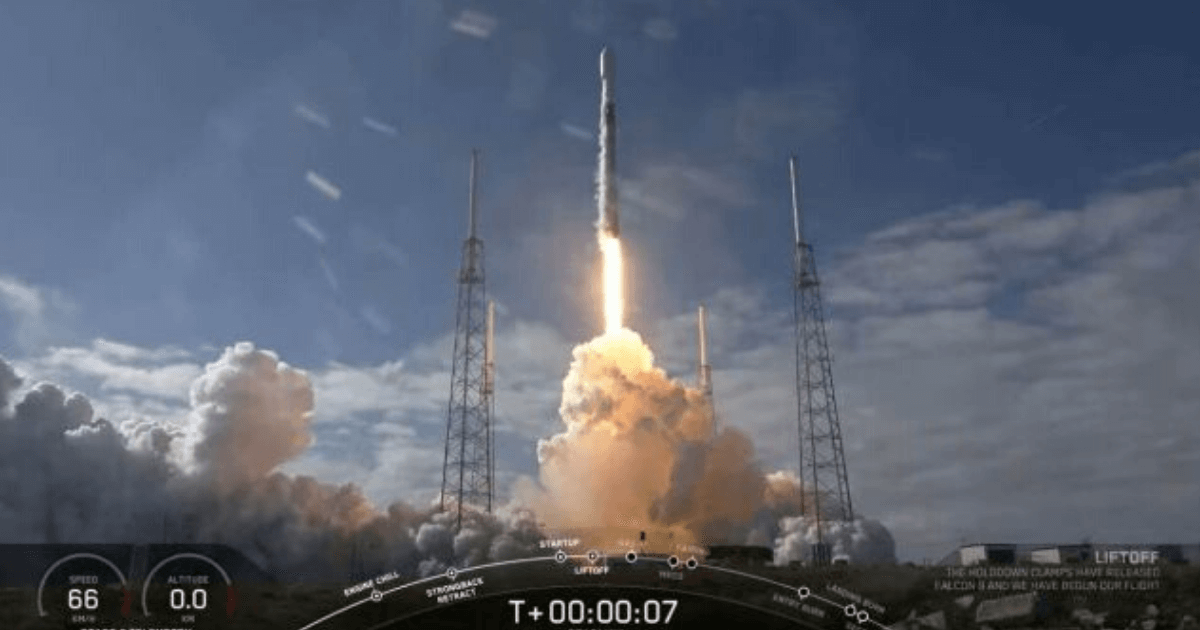
Last Updated on August 28, 2022 by Ram Thakur
Chandrayaan 2 is one of the most ambitious space programs of ISRO. After the success of Mars Orbiter, the hopes have been really high. Chandrayaan 2 almost did what it was supposed to do, i.e, the Lander landed on the dark, unseen side of the moon. But since then, all contacts have been lost, but not our hopes. All efforts are being made, not only by ISRO but also by NASA to get back in touch with the Lander. Here we have everything about this thrilling space program of exploring the unseen side of the moon. So, let’s start from the beginning.
How is Chandrayaan 2 different from its predecessor Chandrayaan 1?
| Chandrayan 1 | Chandrayaan 2 |
| Orbiter- 100 Kms from the Lunar Surface | Orbiter- 100 Kms from the Lunar Surface Vikram Lander- to land softly near the south pole. |
Payloads- 11
|
Payloads- 13, all Indian along with 1 Passive Experiment |
| Was aimed to Discover water on the Lunar surface and map the chemicals and 3D topography | Is aimed to expand the Lunar exploration. |
| Launched in 2008, it was a PSLV with the spacecraft mass of 1.4T | Launched on July 22, 2019, it is a GSLV MKIII with the spacecraft mass of 3.8T. |
Chandrayaan 2 latest news and updates so far:
May 15, 2019
On this day ISRO released the benefits of Chandrayaan 2.
- ISRO believes that the clues to the answers to some extremely fundamental questions related to our Solar System are hidden in the hills, craters, and valleys of the Moon. Their study might unravel these mysteries.
- It will inspire the whole nation to use science and technology in real-life applications.
- It will unleash innovation, resulting in future R&D.
- Chandrayaan 2 will expand India’s footprints in Space.
- It will open doors to exploring more Economic possibilities.
June 3, 2019
ISRO explained the challenges there are to landing on the Moon.
- The non-uniform gravity of the Earth and Moon, Moon’s true Orbital motion, the gravitational pull of other astronomical bodies and solar radiation pressure makes it hard to maintain the trajectory accuracy while navigating such a large distance.
- Heavy background noises make the deep-space communication weak.
- Moon keeps changing its location due to the orbital motion, hence the intersection of its path with Chadrayaan-2 must be predicted well in advance with utmost accuracy.
- The uneven mass distribution under the surface of the Moon makes its gravity lumpy. And since it influences the orbit of the spacecraft, orbiting around the moon becomes a challenge.
- Soft landing on moon is yet another challenge.
- Firing the onboard engines close to the lunar surface might cause the lunar dust to disrupt the working and performance of the spacecraft.
- Vacuums and extreme temperatures also make it hard to function on the lunar surface without facing challenges.
June 28, 2019
Battery assembly for all stages of the launch vehicle was completed for Cahndrayaan-2.
June 29, 2018
Pragyan Rover integrated with lander Vikram after completion of all tests and Vikram lander integrated with Orbiter.

June 30, 2019
Pyro arming and electrical checks were completed and the batteries of the vehicle were charged.
July 1, 2019
Cahndrayaan-2 was all set to integrate with GSLV launcher.
July 2, 2019
The cowling assembly of the equipment bay camera was completed along with the radio frequency checks while the payload fairing assembly was still in process.
July 4, 2019
The encapsulated assembly of Chandrayaan 2 was integrated with the launch vehicle.
July 5, 2019
The phase 3 level 2A checks of the vehicle were completed while the link checks for lander & orbiter from the ground station was in progress.
July 6, 2019
The launch vehicle was all set to move to the launch pad.
July 7, 2019
After GSLV MkIII-M1 was moved to the launch pad, the spacecraft was powered and health checks were done.
July 8, 2019
Full Dress Rehearsal-1 was carried out.
July 9, 2019
End to end checks for the Routing and termination of pyros, pressure sensors, Umbilical Connection Unit separation was done.
July 10, 2019
The final assembly of Shroud was completed along with the On-Board Elementary checks of the Cryogenic stage and Liquid stage control system checks.
July 11, 2019
The battery of the launch vehicle was charged and the launch-related routine checks were done.
July 12, 2019
The launch rehearsals were done and the prefill pressurization of propellant tanks was completed.
July 14, 2019
The countdown for launching Chandrayaan 2 on 15th July started. The liquid stage propellant filling was completed along with UH25 fuel filling of the liquid core stage. Also, liquid oxygen was filled in the Cryogenic stage.
July 15, 2019
Filling of liquid hydrogen was carried out. One hour before the launch, there was a technical snag that resulted in calling off of the launch.
July 18, 2019
After the reason for the technical snag was identified and corrected, a new date of launch was set which was 22nd July 2019. Also, online registration for the viewers’ gallery for watching the launch commenced.
July 20, 2019
Launch rehearsals were completed successfully with normal performance.
July 21, 2019
The countdown began, the UH25 fuel filling of the liquid core stage was completed.
July 22, 2019
N204 was filled for the Liquid core stage, liquid oxygen and hydrogen was filled in the Cryogenic stage.Chandrayaan 2 was launched successfully.
July 24, 2019
Chandrayaan 2 successfully performed the first earthbound orbit-raising maneuver using the onboard propulsion system. The second maneuver was scheduled on July 26.
July 26, 2019
The second maneuver completed successfully and the third one was scheduled for July 29.
July 29, 2019
The third earthbound orbit-raising maneuver was completed successfully and the fourth one was scheduled for August 2, 2019.
August 2, 2019
The fourth maneuver was completed successfully as well and all the spacecraft parameters were normal. The next maneuver was scheduled for August 6, 2019.
August 4, 2019
Vikram Lander captured the first set of breathtaking Earth images.
- Credit: ISRO
- Credit: ISRO
August 6, 2019
The fifth maneuver was completed successfully. The next maneuver is Trans Lunar Insertion which was all set to happen on August 14, 2019.
August 14, 2019
Chandrayaan 2 entered the Lunar Transfer Trajectory successfully. The next Lunar bound orbit maneuver was scheduled on August 21, 2019.
August 21, 2019
The second Lunar bound orbit maneuver was completed successfully and the next one was scheduled for August 28, 2019. Chnadrayaan-2 sent a picture of the moon.
August 26, 2019
Terrain Mapping Camera 2 sent the images of the lunar surface showing impact craters such as Jackson, Mitra, Mach, and Korolev.
August 28, 2019
The third Lunar bound orbit maneuver was completed successfully and the next one was scheduled for August 30, 2019.
August 30, 2019
The fourth maneuver was completed successfully and the next one was scheduled for September 01, 2019.
September 01, 2019
The final maneuver was completed successfully and the next operation was the separation of Vikram Lander from Chandrayaan 2 Orbiter that was to occur on September 02, 2019.
September 2, 2019
Vikram Lander successfully separated from Orbiter and continued to orbit the Moon in its existing orbit. The next maneuver was scheduled on September 03, 2019.
September 3, 2019
The first de-orbiting maneuver for Chandrayaan 2 was performed successfully. The next deorbiting was scheduled for September 04, 2019.
September 4, 2019
The second maneuver for deorbiting was performed successfully and the orbit required for the Vikram Lander to start its descent towards the surface of the Moon was achieved.
September 7, 2019
The Vikram Lander followed the planned descent trajectory and all the systems and sensors were functioning perfectly. Due to the hard landing, all communications with Vikram Lander were lost.
September 10, 2019
Orbitor spotted Vikram Lander and all possible efforts were being made to establish communications with it.
Even today, ISRO and NASA are trying to establish communication with Vikram Lander. Our fingers are crossed and we are hoping the best.











[…] Also Read: Chandrayaan 2 Latest News And Updates […]
[…] Also Read: Chandrayaan 2 Latest News And Updates: All You Need To Know […]
[…] Chandrayaan 2 Latest News And Updates […]